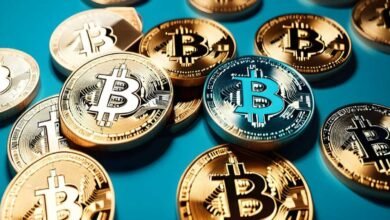
XRP and Its Impact on the Crypto Market
XRP, the native cryptocurrency of the XRP Ledger, has been a major player in the digital asset space since its creation by Ripple Labs in 2012. Unlike Bitcoin and Ethereum, XRP was designed specifically for fast and low-cost cross-border payments, making it an attractive option for banks, financial institutions, and payment providers.
Despite regulatory challenges, particularly its ongoing legal battle with the U.S. Securities and Exchange Commission (SEC), XRP remains one of the top cryptocurrencies by market capitalization. Below is an analysis of XRP’s current position and its potential impact on the broader crypto market.
1. XRP’s Role in the Financial System
XRP is primarily used for cross-border transactions and liquidity solutions. RippleNet, the network built by Ripple, enables institutions to settle international payments quickly and cheaply using XRP as a bridge currency. Compared to traditional SWIFT transactions, which can take days, XRP transactions settle in 3-5 seconds with fees as low as a fraction of a cent.
This use case has positioned XRP as a key player in the global financial system, with partnerships involving banks, payment providers, and remittance services worldwide. If adoption continues to grow, XRP could become a major backbone of future digital payment infrastructure.
2. SEC Lawsuit and Regulatory Clarity
One of the biggest factors affecting XRP’s market performance is the SEC lawsuit filed against Ripple in December 2020. The SEC alleged that Ripple conducted an unregistered securities offering by selling XRP. This legal battle has significantly influenced XRP’s price and market perception.
However, in July 2023, Ripple secured a partial victory, with a U.S. judge ruling that XRP is not a security when sold on exchanges. This ruling brought a wave of optimism, leading to a surge in XRP’s price. Despite this, the lawsuit is still ongoing, and the final verdict will shape how crypto assets are regulated in the U.S.
If Ripple ultimately wins the case, it could set a strong legal precedent for other cryptocurrencies, providing regulatory clarity and confidence for institutional investors. On the other hand, an unfavorable ruling could lead to stricter crypto regulations in the U.S.
3. Institutional Adoption and Partnerships
Ripple has formed strategic partnerships with numerous banks and financial institutions worldwide, including:
- Santander
- American Express
- Tranglo
- SBI Holdings
- Bank of America (speculated to be testing XRP-based solutions)
These partnerships showcase XRP’s real-world utility, as institutions use it to facilitate instant global payments and remittances. As more banks adopt Ripple’s On-Demand Liquidity (ODL) solution, XRP demand could rise significantly, positively impacting its price and liquidity.
4. XRP’s Potential in the CBDC and Tokenization Space
Ripple has actively positioned itself in the growing Central Bank Digital Currency (CBDC) and tokenization market. The company has launched initiatives to help governments and institutions create CBDCs using the XRP Ledger (XRPL).
- In 2023, Ripple partnered with multiple central banks to explore CBDC use cases.
- The XRP Ledger allows for seamless asset tokenization, making it a potential infrastructure for tokenized real-world assets like stocks, bonds, and real estate.
If Ripple successfully expands its presence in these sectors, XRP’s role in the digital economy could significantly strengthen, attracting long-term institutional investment.
5. Market Liquidity and XRP Price Outlook
Short-Term Factors
- SEC lawsuit developments will heavily influence XRP’s price movement.
- Broader crypto market trends, such as Bitcoin ETF approvals, could impact XRP’s performance.
- If Ripple announces new partnerships or gains regulatory clarity in key markets, XRP’s adoption could accelerate.
Long-Term Outlook
- If XRP continues to be adopted by financial institutions, its demand as a liquidity bridge could increase.
- Ripple’s expansion into CBDCs and asset tokenization could open new growth opportunities.
- A finalized legal resolution in the SEC case could remove uncertainty, making XRP more attractive to institutional investors.
If XRP regains momentum, some analysts believe it could challenge its all-time high of $3.84 (reached in 2018) in the next bull run. However, this depends on macroeconomic factors, regulatory clarity, and broader crypto adoption.
: XRP’s Future in the Crypto Market
XRP remains a crucial asset in the crypto space due to its utility in global payments, strong partnerships, and institutional adoption. Despite regulatory uncertainties, its long-term potential remains strong, especially if Ripple continues expanding into CBDCs, financial settlements, and tokenization.
If the SEC case concludes favorably and institutional adoption grows, XRP could play a major role in the future of digital finance, bridging the gap between crypto and traditional banking systems.



